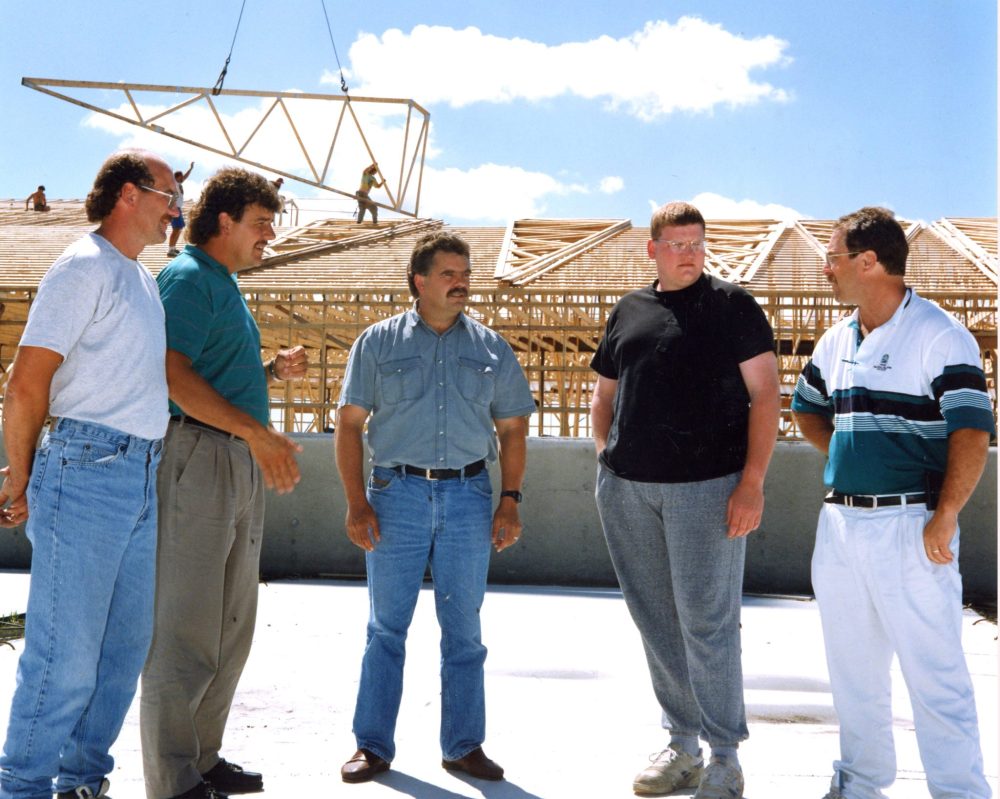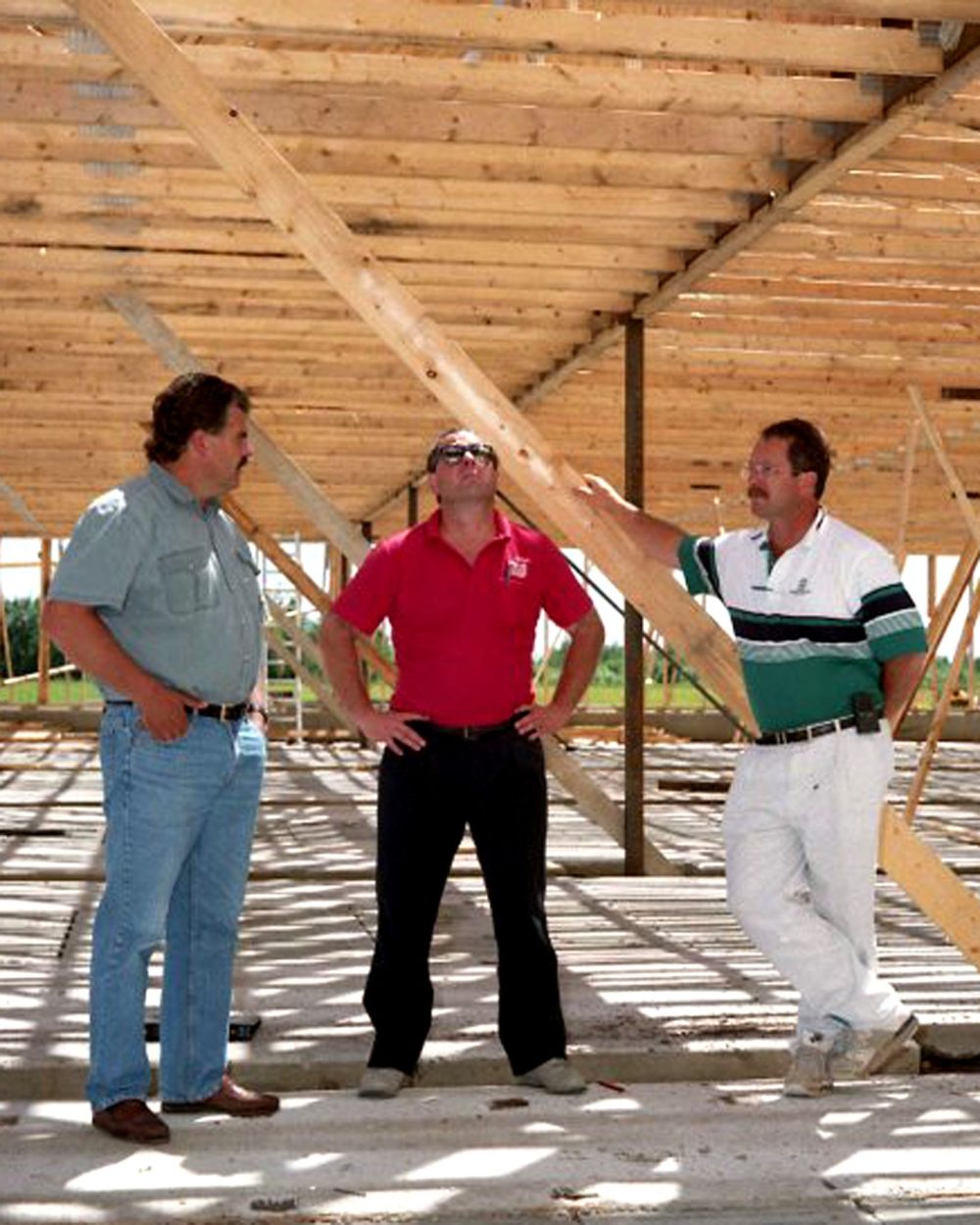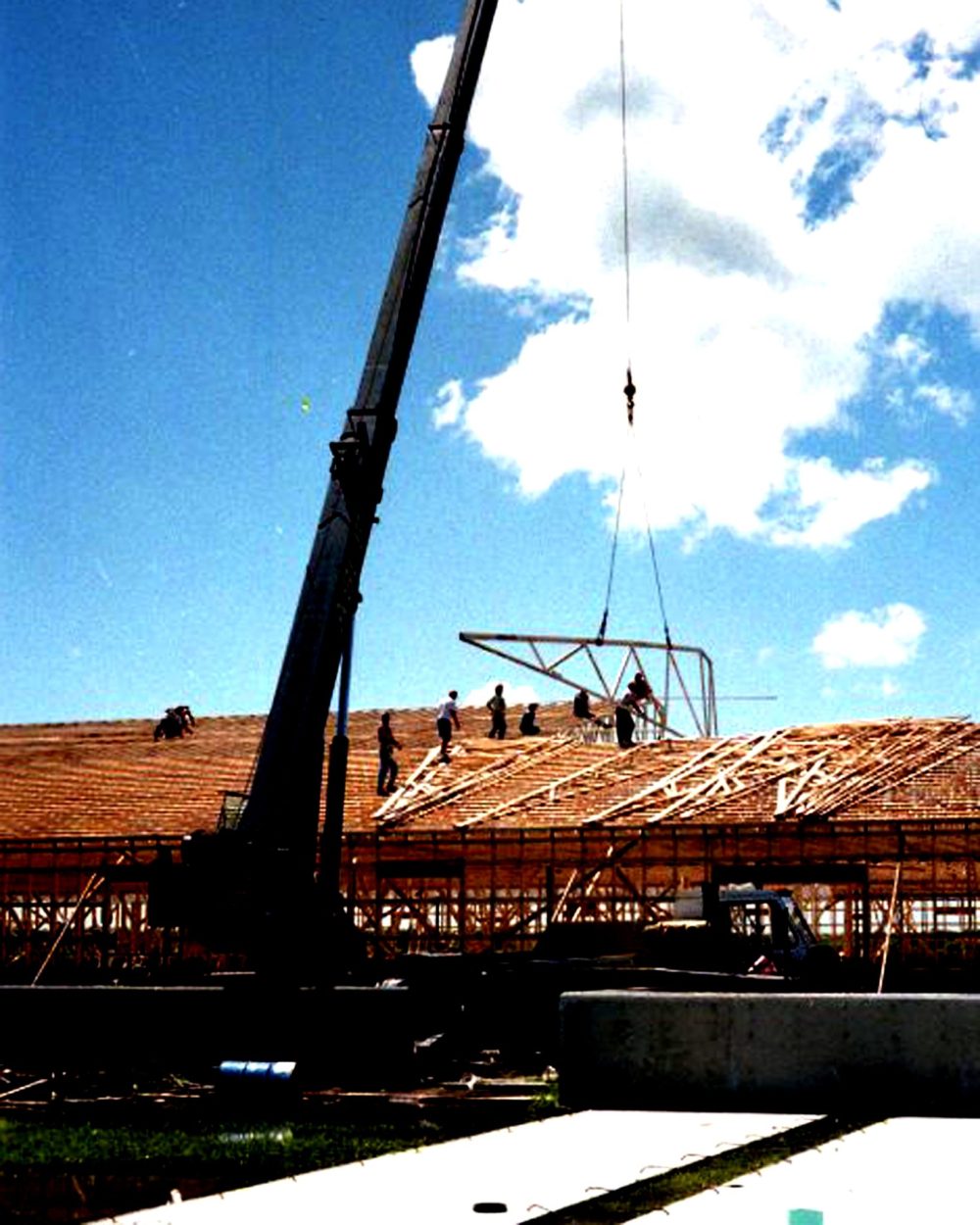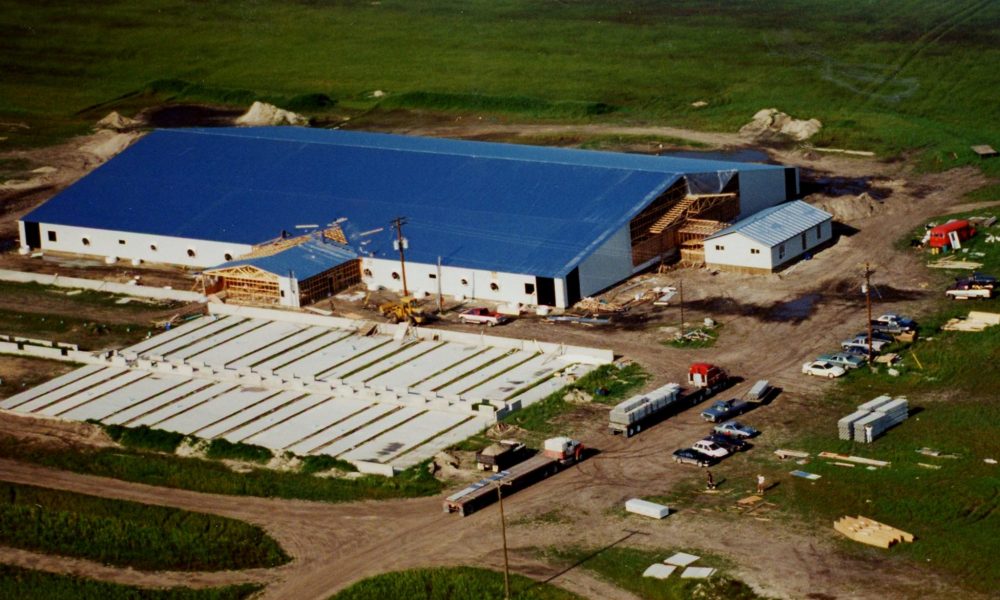COLUMN: The Carillon Flashback July 27, 1994 – Huge Tritek barns reflect a bright future for hogs
Advertisement
Only modesty prevents La Broquerie’s Vielfaure brothers and the boss of Boss Hogs Farms from agreeing they are on their way to becoming Manitoba’s largest hog producers.
A pair of huge barns under construction southwest of La Broquerie will house 2,500 sows in a farrow-to-weanling operation. Once the facility, a joint venture known as Tritek Farms, is in full production, Don Janzen and Paul, Denis and Claude Vielfaure will be supplying 150,000 weanlings to the feeder market annually.
Janzen, who started in the poultry business with his father and expanded into hogs in 1986, says the challenges of a non-supply-management commodity are different. Not being controlled like dairy or poultry, both production numbers and efficiency have to be there to succeed in a wide open market, he emphasized.

Janzen bought his father’s farm in 1980 and currently has 2,500 sows on three separate locations; one near Randolph, one near New Bothwell and a third 10 miles south of Steinbach.
Paul, Denis and Claude Vielfaure grew up amid the expanding Vielfaure family farm operation, learning valuable lessons on how to survive the lows from their father, Albert.
Paul Vielfaure said they are doing many of the same things their father did—expanding, working on inflation, taking advantage of lower feed costs and interest rates.
“What really doesn’t mix is when the price of hogs is down and feed costs and interest rates are way up. We’ve hit some of those times, but never to the extent our father did.”
Vielfaure is confident the peaks and the valleys will never again be as severe and sees a real potential for growth in the hog industry in this area.
New regulations governing livestock operations are a positive factor too, as producers now know exactly where they stand. Their operations, presently three 600-sow barns on separates sites between La Broquerie and Marchand, have the advantage of being secluded from their neighbors. The Vielfaures have not experienced any of the opposition others have faced nearer urban centres.
The Vielfaures recently bought 160 acres for the new farrowing operation and there is plenty of land for sale in the area for further expansion. For their part, neighboring farmers are more than willing to take the hog manure as fertilizer for their own forage crops.
Janzen agrees it is this shared view of the future that got the two operations together in this latest major expansion. The Vielfaures had started planning for barns for 1,500 sows last August, but when they heard Janzen might be interested, they approached him with the idea of joining forces and adding another 1,000 sows.
Boosting the economy
The Vielfaures and Janzen are not the only ones reaping the benefits of the bright future of an expanding hog industry in the Southeast.

A steady stream of trucks delivering material, a long row of vehicles parked waiting for workers to finish a shift, and two dozen carpenters enjoying a brief outdoor coffee break in the sunshine, all reflect the boost a project like this gives the local economy.
Construction supervisor Farrel Rempel of Terra-Nova Construction said barns, hog barns in particular, are becoming a large part of his business.
“We build four to six houses a year, mostly for friends, and maybe a shop or two, but mostly it is barns.”
The smaller of the Tritek Farms’ two barns, slated to be ready for gilts early in August, rises 30 feet from floor to peak, stretches out 188 feet in width and is 282 feet deep.
The larger farrowing facility, to be ready by October, will be 155 feet wide and 400 feet long. The two barns will total 115,000 square feet, covering approximately three acres. That is just slightly smaller than the regional high school in Steinbach.
These, of course, are the largest barns Rempel and his crew have tackled, although they have a number of other projects currently on the go.
Terra Nova’s forte is that they offer a complete package by bidding on materials and labour, as well as the supplying and installing of equipment, Rempel explained.
In the case of the Vielfaure/Janzen facility, the Vielfaure brothers have made all the penning themselves and will be buying part of the feeding system, but have manufactured some parts of that as well.
The material package and labor for the barns will run close to $2 million and when equipment and stocks are added in, the total investment will be nearer $4.5 million.
The shopping list brings a gleam to the eye of concrete suppliers like C.T. Loewen and Sons, who won this contract. Twenty-eight hundred cubic yards or 2,000 cubic metres is a lot of concrete by any measure, considering an average house basement needs only about 40 cubic metres.

To get an idea of just how huge these two barns are, before they have finished, crews will have poured enough concrete for all the basements in Steinbach’s Southland Estates housing subdivision.
The Terra-Nova crew can’t wait for one of two 75-foot by 200-foot slabs for the second barn to be poured, so they can play floor hockey on their lunch breaks, Rempel chuckled.
Plywood by the truckload
The Tritek barns will use 8,000 sheets of plywood compared to the 500 sheets needed for the barn expansion to house 1,200 feeders that Rempel’s crew recently built on Provincial Road 303.
“Here they deliver a semi-trailer load of plywood at a time, while we are used to getting plywood by the lift.”
The building, dwarfing semi-trailers parked next to it, is nearly clad in metal as workers hurry to meet the Aug. 1 deadline.
At the site, earlier in July, Rempel was confident they would be able meet the deadline. Depending on the weather of course, he was quick to add.
With a building this size, both wind and rain are elements that have to be contended with. More than one otherwise ideal day was spoiled because the wind made it impossible to use the crane to put up rafters.
“Things go quickly when the weather is right. It is amazing how much can be accomplished in a week without interruptions.”
Rempel is certainly enjoying the present building boom in the hog industry, although he admits there is a certain amount of pressure in juggling the number of inter-connected projects.

A Borland Road barn had to be finished the day before the July long weekend to be ready for stock, due to arrive the following Tuesday. And the first of the two Tritek barns must be ready for gilts right after the August long weekend, he explained.
The La Broquerie area is leading the way in both expansion and innovation in a very competitive hog industry.
Last year, Elite Swine Inc. built the first isolation barn in Manitoba near Marchand and now there are four 4,500 sq.ft. barns on that site.
Bruce Campbell, owner of Landmark Feeds Group, which just celebrated its 40th anniversary, looks to the hog sector and producers like Janzen and the Vielfaures for a continued significant increase in their percentage of the feed company business.
Manitoba Agriculture Minister Harry Enns describes pork produced in Manitoba as the best in the world, saying the multi-million-dollar market opportunity will create thousands of new jobs on Manitoba farms and in processing industries.
Farrel Rempel at Terra-Nova, and Curt Loewen and Roger Loewen at C.T. Loewen and Sons hope the agriculture minister is right. After all, it’s good for their businesses too.
